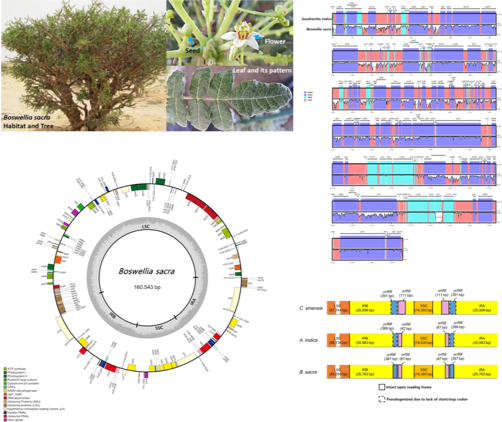Genomic, Transcriptomic and Proteomic Mechanisms Involved in Resin Production from Endemic Boswellia Sacra Tree
Key personals: Abdul Latif Khan (Uni of Houston), Ahmed Al-Harrasi, Ahmed Al-Rawahi, Sajjad Asaf (University of Nizwa), Daniel Schachtman, Jean-Jack Reithoven (U of Nebraska-Lincoln)
Boswellia sacra is an economically important frankincense producing endemic tree of Sultanate of Oman. During tapping/wounds to the tree for resin, the tree activates its physiological defense mechanisms by producing volatile and non-volatile chemical messengers to counteract the negative impacts of resin production. Such defense responses have been extensively studied in pine tree, however, during tapping of Boswellia species, especially B. sacra nothing is known. It is also not yet specified that whether the resin production is solely induced by wound/tapping or it is ignited by fungal pathogenesis. In this regard, the present research project has been proposed with the aim to understand the physiological, molecular and biosynthetic mechanisms involved during resin production of Boswellia sacra. The fungal pathogens and symbiotic microflora of the bark and resin will be explored to understand resin synthesis mechanism. Major resin constituents such as boswellic acid will be explored in the tissue culture originated ex-plants and bioactive fungal strains. Whole genome sequencing of the Boswellia sacra will be performed for the first time to understand and conserve the essential gene pool of the endemic tree. To reveal this, various biochemical, proteomic molecular and bioinformatical approaches will be adopted using advance instruments and in silico big data obtained through proteomics and next generation sequencing.
